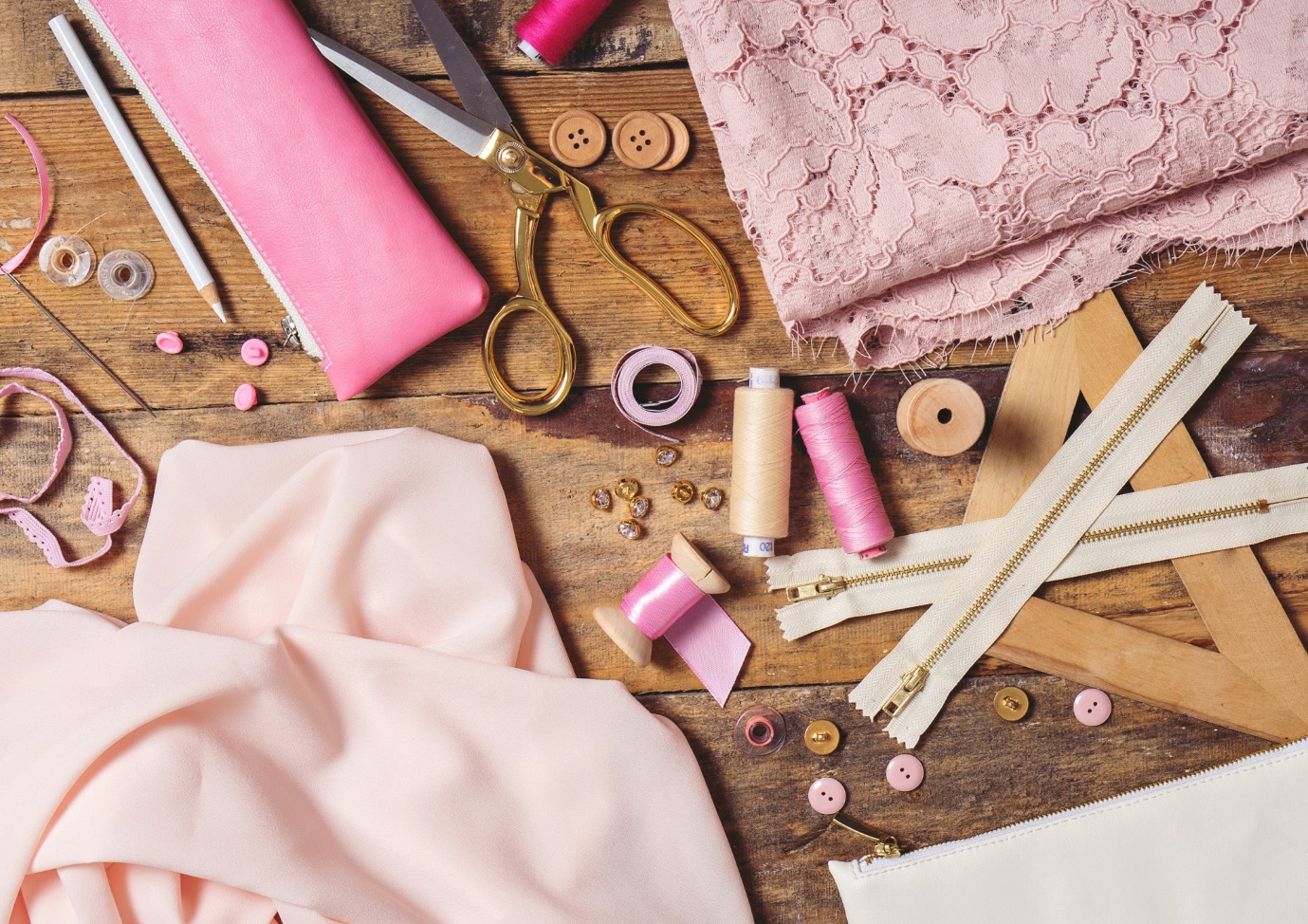
Do you want to learn how to sew a dress by hand but don’t know how or where to start?
The idea of sewing your own dress can seem intimidating but don’t worry. We’ve come up with a guide that you can use to learn how to sew clothes by yourself.
It’s a great way to show off your style and express yourself, so keep on reading to find out more!
Sewing Basics
The first things you need to learn when looking for how to sew a dress by hand are the basics. Things like how to thread a needle or the different sewing stitches you can learn. You need a good grasp of how to hand sew before you start making your dress.
Step one is knowing which kind of needle to use and how to use it. You can find a wide variety of needles in different shapes and sizes. Most commonly, the bigger ones are for thicker fabrics while the finer needles are for more delicate fabrics.
The most used stitches are the running stitch, the backstitch, and the slip stitch.
The running stitch is the simplest one of the three, usually used for shortening clothing or adding patches. Pull the needle through the backside of the fabric while moving it a short distance. Then thread it back to the front side and repeat.
The backstitch will become useful when making your dress. It creates a stronger and more flexible bind with the pieces of fabric. This is good if you’re new to sewing and don’t know more complicated ones.
The next stitch is the slip stitch, which is a common hemstitch. This is the better choice when you don’t want your stitches to be too visible. You can easily hide the stitches between the two pieces of fabric you’re sewing together such as the case for hems and lining.
Choose Your Fabric
Once you have the basic materials you need and know which stitch to use, the next step is to pick out your fabric. You can use any fabric that you like when making a dress. Although, if this is your first time sewing a dress, you’ll want to start with a fabric that’s easy to work with like a natural or cotton blend.
The texture is an important factor to weigh in when choosing which fabric to use. Silkier fabrics tend to be harder to work on without a bit of practice. This is also true with thicker and heavier fabrics like corduroy or wool.
Once you’ve chosen the fabric you want to work with, you’ll need around 2-3 yards of it. Of course, it all depends on your size and how long you want the dress to be. If you’re using thrift shopped or reused fabric you can use another dress as a basis for how much you’ll need.
Choose Your Dress Pattern
The dress pattern is what serves as a guide for you to follow when cutting up the fabric. The dress pattern you choose will need your specific measurements and shapes. It shows you the different pieces you’ll need to make for the style of the dress that you want.
You can find several dress patterns at your fabric and craft stores. You can make your own by finding templates online and printing them out. Make sure that you get a style and shape that matches your body and measurements.
Once you have your dress pattern, you’ll want to open them up and identify which part of the dress they are for. Have all the different pieces ready and know where they’re supposed to go. This will help you make your dress consistent by finishing pieces that give you an idea of what to do.
Making the Dress
Once you have all your pattern pieces ready to go, the next thing you’ll want to do is to prep all of your fabric. Get rid of any wrinkles and lay the whole thing out on a flat surface (and fold the fabric if your pattern calls for it). Position your pattern pieces on the fabric and trace the outlines of the patterns on the fabric.
The next step is to start cutting your fabric pieces by following your traced-out pattern. You’ll want to give around a half-inch of extra fabric for the seams. If there are any extra pieces you’re going to use like sleeves, make sure that you leave enough extra fabric for it.
After you’ve cut out all the pieces of fabric you need, the next thing you need to do is to start sewing. Follow along with the directions on your dress pattern. Typically, you’ll want to start on the sides of the dress, combining the front and back of the dress.
If you don’t want the stitches on your dress to be visible, you can have the inner sides of the fabric facing out. This is so when you’ve sewed them together, turning the fabric inside out will hide any seams you’ve made. To finish off your dress after you’ve sewed everything, you can iron everything down to prevent them from losing shape.
If you don’t have the time or the patience to make every stitch by hand, you could always resort to a sewing machine or an overlocker. What is an overlocker? Discover the details here!
Now You Know How to Sew a Dress by Hand
Sewing your own dress is a great way to learn a new skill while also expressing yourself.
It can seem like a daunting task but once you learn all the basics and put in the time, it can be a fun and simple process. We hope that after reading this article, you’ve gotten a better understanding of how to sew a dress by hand.
But don’t stop discovering handicraft and stitching tips here! If you enjoyed this article and found it helpful, go ahead and read the rest of our guides right here for more!
Leave a Reply